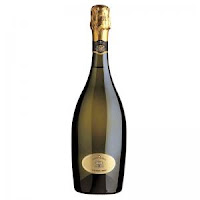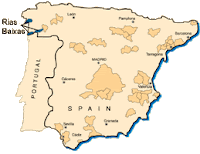Thus, it is important for wine drinkers to understand the wine laws for countries in order to better appreciate the wine. Below are a selection of countries and the correlating wine laws regarding blending.
- United States of America: At least 75% of the grape listed on the label needs to be of that grape, thus classifying the wine as a "varietal" wine. The remaining 25% can be anything, and does not need to be listed on the label. If at least 75% of the wine is not made from one grape, the wine is then considered a "blend".
- For instance - that 2008 Cabernet Sauvignon from Napa Valley that you are enjoying right now could be 75% Cabernet Sauvignon, 10% Merlot, and 15% Cabernet Franc. Or, it could be 100% Cabernet Sauvignon. Or, it could be any other logical combination. If you are really curious, go on to the website for the winery and see if the site lists the specifications for their wines.
- France: 100% of the grape listed on the label needs to be of that grape. This stems from the French tradition of doing beautiful blends, and the reason why the majority of labels list geographical locations, rather than varietals. So how do you figure out what you are drinking? Study, study, study. The only way to understand French wine is to learn which grapes are grown in which wine regions. However, here are some hints. Of note is that these are only major grapes. There will potentially be many other grapes that will be blended into these wines.
- Burgundy
- Pinot Noir, Chardonnay
- Bordeaux
- Merlot, Cabernet Sauvignon, Sauvignon Blanc, Semillon (white)
- Alsace
- Riesling
- Loire
- Western: Muscadet (white)
- Central: Cabernet Franc (red), Chenin Blanc (white), Sauvignon Blanc
- Upper: Pinot Noir, Sauvignon Blanc
- Auvergne: Gamay (red), Pinot Noir, Chardonnay
- Rhône
- Northern: Syrah, Viognier (white)
- Southern: Grenache, Grenache Blanc (white)
- Italy: Like France, 100% of the varietal listed on the label needs to be of that grape. Once again, the reason why so many Italian wines list geographical locations. Here are some more hints.
- Tuscany
- Sangiovese (red), Trebbiano (white), Malvasia (white)
- Vento
- Corvina (red), Garganga (white)
- Friuli-Venezia Giulia
- Cabernet Sauvignon, Merlot, Frulano (white), Chardonnay
- Trentino-Alto Adige
- Cabernet Sauvignon, Merlot, Pinot Biano (white), Chardonnay, Riesling
- Lombardy
- Bonarda (red), Chardonnay, Moscato (white)
- Piedmont
- Nebbiolo (red), Barbera (red), Cortese (white), Arneis (white)
- Liguria
- Sangiovese (red), Vermentino (white)
- Spain: At least 85% of the varietal listed on the label must be of that grape.
- Australia: At least 85% of the varietal listed on the label must be of that grape.
- Argentina: At least 80% of the varietal listed on the label must be of that grape.














